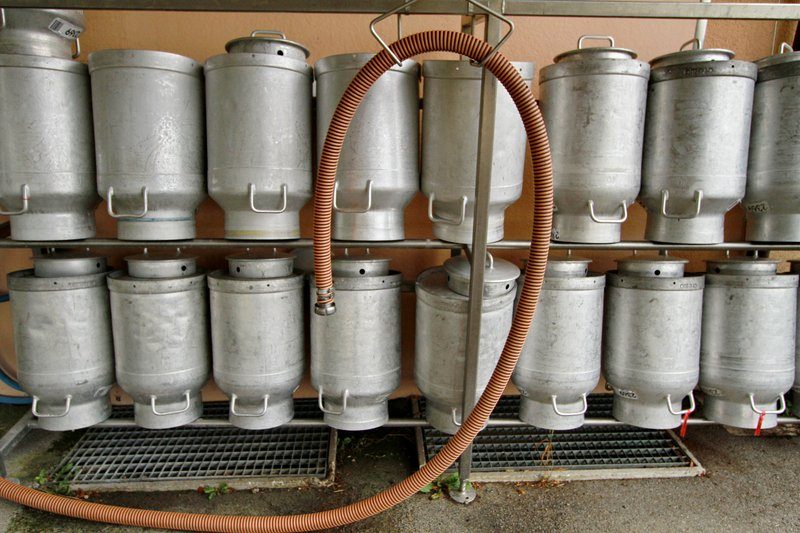Organic farming, Slovenia, 2018
In 2018, 21% more organic vegetables produced in Slovenia than the year before
21% more organic vegetables were produced in 2018 than in 2017. After the fall of the quantity of produced vegetables by 14% in 2017 compared to the previous year, in 2018 almost 4% more was harvested than in 2016.
The number of organic farms increased by 4% in 2018
The number of agricultural holdings in the system of control of organic production in 2018 increased by 3% over 2017; the number of agricultural holdings with the status of organic producers increased by 4%, while the number of agricultural holdings in conversion decreased by 5%. Agricultural holdings in the system of control of organic production in 2018 (3,741) represented 5.4% of all agricultural holdings in Slovenia; those that already reached the status of organic producers (3,320) represented 4.8% of all agricultural holdings in Slovenia. The shares of both increased in 2018 by 0.2 of a percentage point.
Organic utilised agricultural area increased by 3% in 2018
Organic utilized agricultural area increased by 1,320 hectares or 3% in 2018 compared to 2017.
In 2018, the area of organic vineyards increased by 37% (or by 124 ha), followed by orchards and olive groves (by 14% and 13%, respectively or by 183 ha and 26 ha, respectively). The area with organic production of vegetables increased by 11%, which is only 22 ha.
The share of permanent meadows and pastures in total organic utilised agricultural area is slowly decreasing (82.8% in 2017 and 81.7% in 2018).
Organic fruit production in 2018 significantly higher than in 2017
Given the extremely low fruit output in 2017 due to adverse climatic conditions, in 2018 the highest increase was recorded in organic production of fruit, almost by 6 times (5,021 tons in 2018 and 895 tons in 2017). The total organic production in arable land and gardens was 26% higher than in 2017 (weighing 29,008 tons); vegetables increased by 21% (weighing 1,834 tons). The output in organic vineyards was higher by 15% (weighing 1,505 tons) and in olive groves by 31% (weighing 552 tons).
The number of organic livestock in 2018 decreased in almost all species compared to 2017
In 2018, the number of individual species of animals in organic farming was mostly lower than in 2017, on average by 9%. Only the number of honey bee colonies increased by 31% (from 2,182 to 2,863), of other animals (game reared in pens) by almost 9% and of cattle by almost 2%.
The weight of meat from animals in organic farming increased by 26%
In 2018 the total weight of meat from organic farming increased by 26% over the previous year. The weight of cattle meat increased by 27% and of pig meat by 19%, while the weight of sheep meat decreased by 41% and of goat meat by 57%. There was no equidae meat in 2018. The weight of poultry meat increased by 29% and the weight of other animals’ meat (game reared in pens) by 238%.
The production of organic cow’s milk in 2018 was 6,868 tons or 20% more than in 2017, sheep milk 181 tons or almost 2% less than in 2017, and goat milk 139 tons or 13% less than in 2017.
Compared to 2017, in 2018 there was an increase also in the production of honey (by 40%) and eggs (by 26%).
Organic products of some important groups of crops, Slovenia
Source: Ministry of Agriculture, Forestry and Food | |||||||||||||||||||||||||||||||||||||||||||||||||||||||||||||||||||||||||||
Organic products of animal origin, Slovenia
1) Some totals do not add up due to rounding. Source: Ministry of Agriculture, Forestry and Food | |||||||||||||||||||||||||||||||||||||||||||||||||||||||||||||||

.jpg)

 (1).jpg)
